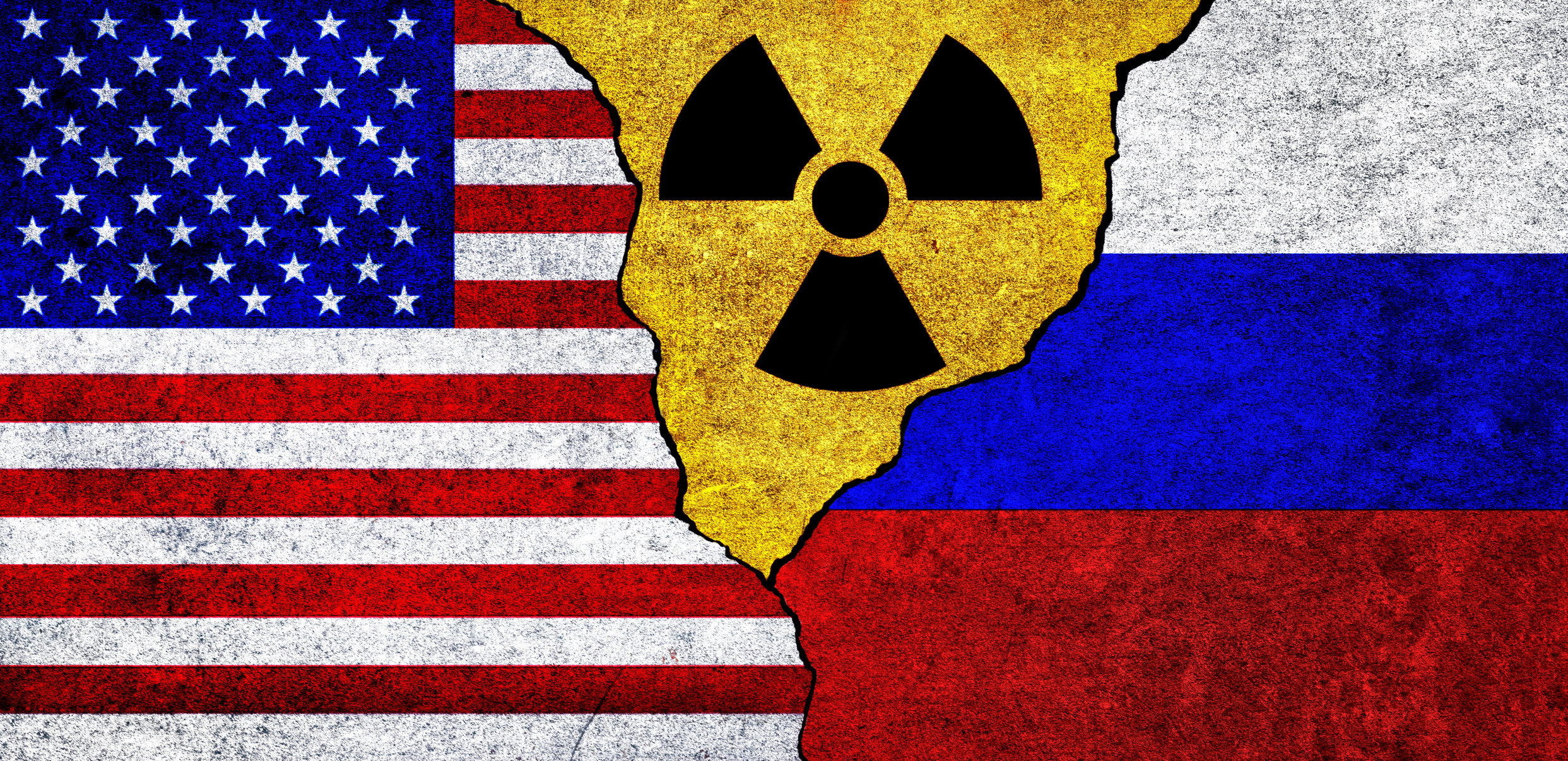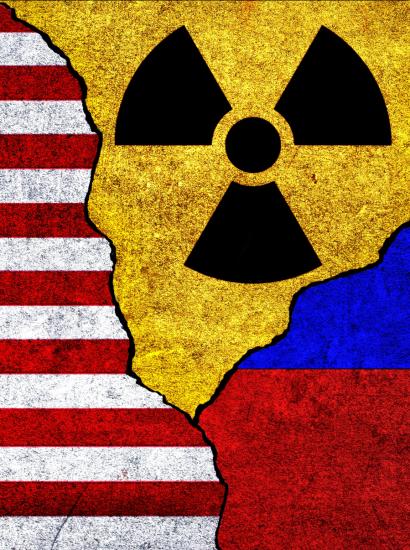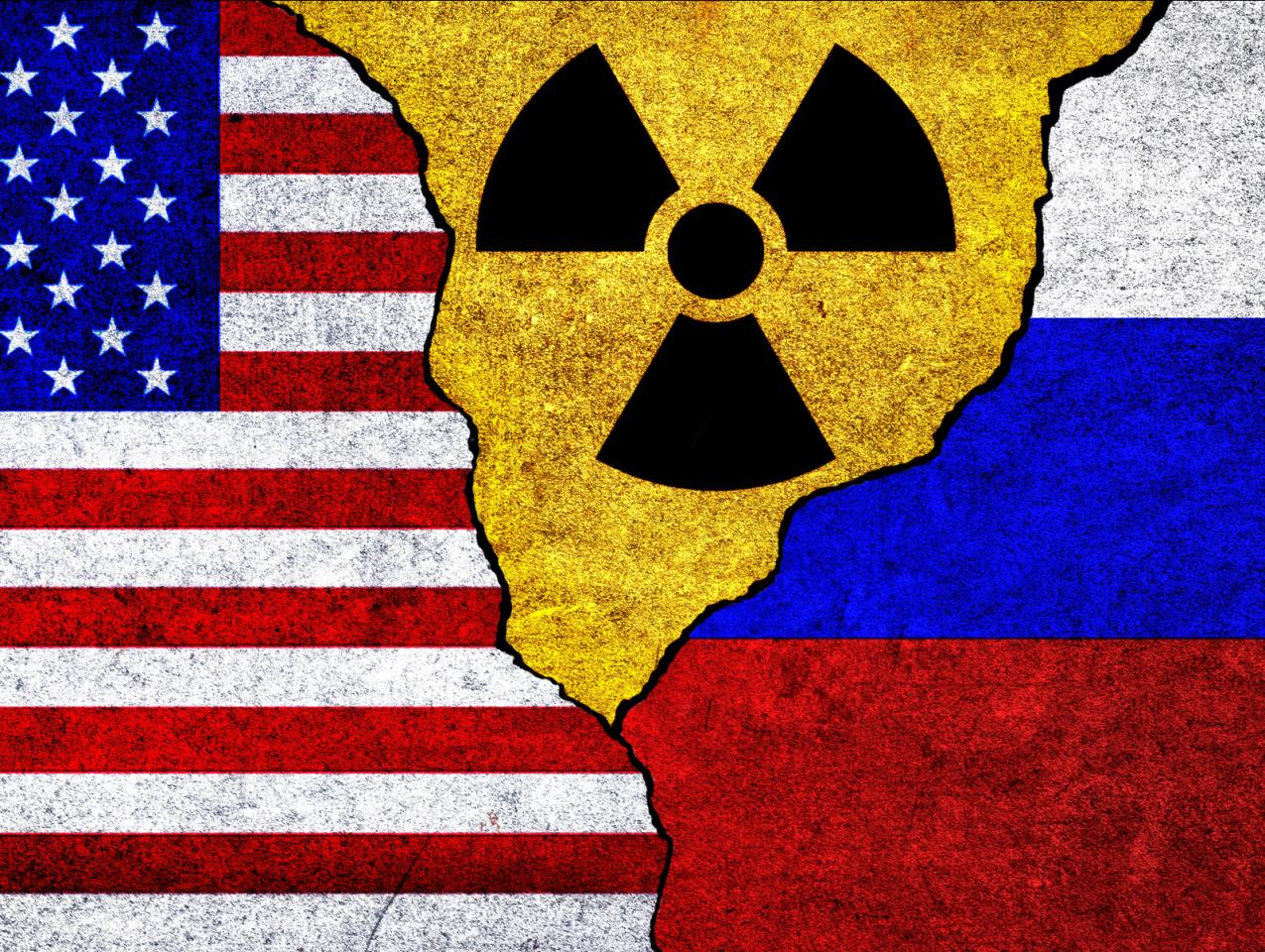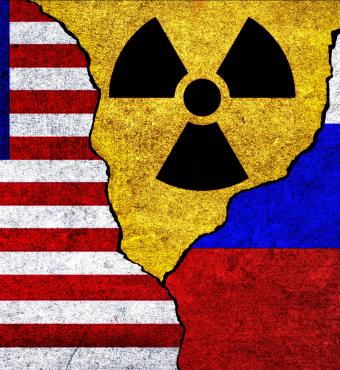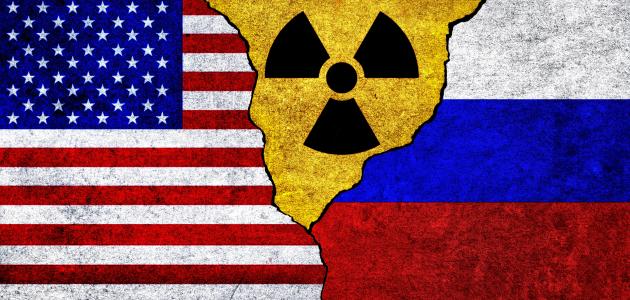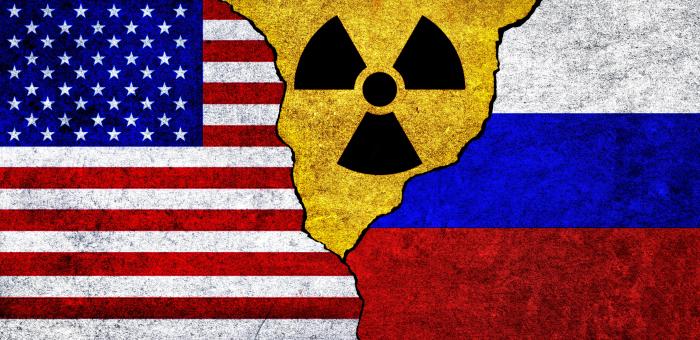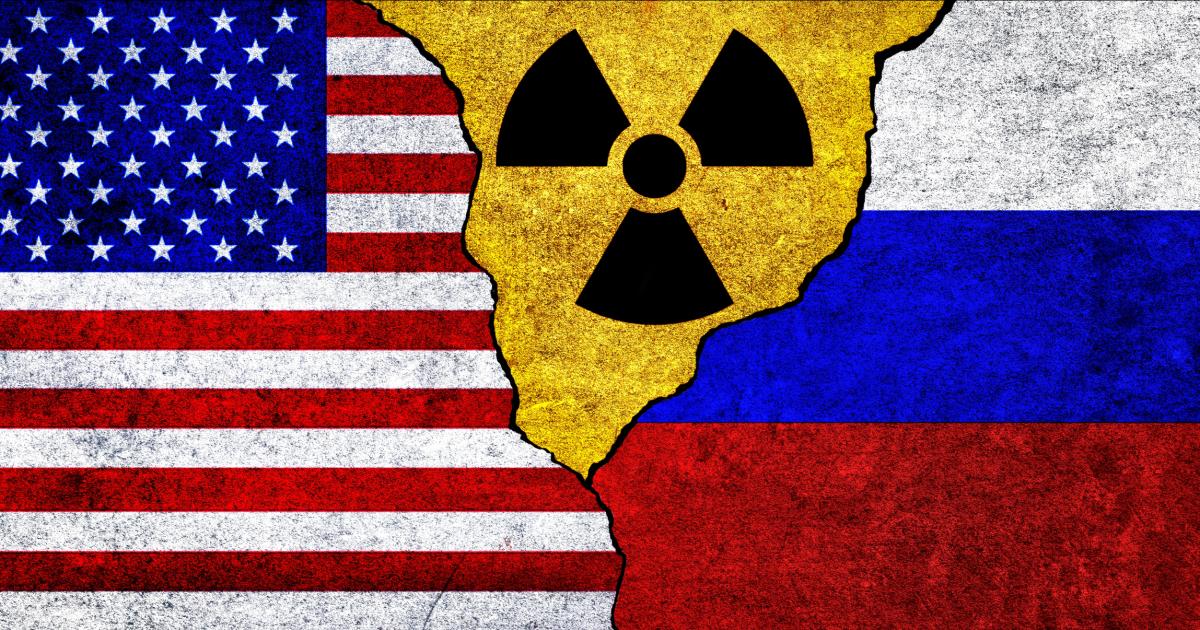Introduction
Nuclear weapons appear in almost any analysis of global strategic issues. Currently, they have become prominent as a major component of the complex of issues surrounding the Russian attack on the independence and territorial integrity of Ukraine, a sovereign state in the center of Europe. The prominence of the nuclear issue in this case stems from warnings by the president of Russia that his country’s nuclear weapons might be used to prevent friends and supporters of Ukraine from intervening to thwart Russia’s invasion of Ukraine in February 2022.
These threats from the Russian president were a blatant violation of a commitment that each of the nuclear-armed permanent members of the UN Security Council had given separately and explicitly to Ukraine. The commitment was aimed at reassuring Ukraine that it could safely join the Nuclear Non-Proliferation Treaty (NPT) as a non–nuclear weapons state. At the time of these commitments in the early 1990s, Ukraine was deliberating whether to ship to Russia for dismantling the nuclear warheads that it had inherited from Soviet deployments in Ukraine (along with ICBMs, nuclear cruise missiles, and tactical nuclear weapons). The United States, for its part, supported this course of action with direct material assistance in the dismantling of the delivery vehicles that had been deployed in Ukraine under the Soviet Union.
Trust in the various types of inducements offered to Ukraine became an element in the Ukrainian government’s decision to accept the status of becoming of a non–nuclear weapons state. A faction in the nation’s parliament had been advocating for an alternative course—retaining a small number of nuclear weapons, and then joining the NPT as a nuclear weapons state alongside Russia, the United States, and the other nuclear weapons states that are members of the NPT. But Ukrainian president Leonid Kravchuk defied that faction and, supported by the United States, authorized his nation to endorse an agreement with the United States under which assistance would be provided to Ukraine to dismantle the Russian nuclear delivery vehicles in Ukraine.
This US-Ukraine agreement was initialed by US Secretary of State Warren Christopher while he was in Kyiv on a visit. An agreement was also reached between Russia and Ukraine under which Russia would give Ukraine financial compensation for the tactical nuclear warheads already withdrawn from Ukraine, as well as for the strategic nuclear warheads that would be sent to Russia for dismantlement under the new agreements. Under these conditions, President Kravchuk became politically strong enough to proceed with the elimination of all nuclear weapons from Ukrainian soil.
The decision by President Putin to invade Ukraine, of course, in itself destroyed whatever trust remained in Kyiv that the Kremlin could be counted on to keep its word. That decision turned out to be a catastrophic miscalculation on the part of President Putin: not only did the Ukrainian people unite behind their president, find the strength to resist Russia’s attack, and even begin to recover occupied territory, but also Russia’s blatant violation of norms that the West had taken for granted came as such a shock that Russia found itself isolated from Europe and North America.
From the 1950s onward for decades, the United States has concluded that negotiations with Moscow are so overwhelmingly important in terms of survival in the nuclear age that they must continue despite the state of relations between the two countries. The Kremlin evidently felt its interests were best served by keeping open the channels for talking with Washington about nuclear weapons. In the essay by Dr. Edward Ifft that follows, we will see that vitally important issues involving nuclear weapons are similarly at stake today and that ignoring them would lead to a step backward in terms of international security.
Can the United States and Russia continue the custom of negotiating on nuclear arms control through ups and downs in their relationships? This may be a truly existential question today. This crisis in US-Russian relations is at least as serious as US-Soviet confrontations over Berlin during the depths of the Cold War. What is different is that the West is now directly involved in a World War II–type war between Russia and Ukraine. American weapons of war are being used by Ukrainian forces to defend themselves against Russian troops. This is essential under the circumstances, and doubtless will continue.
At the same time, China has been in the process of building up its nuclear forces and has become a greater threat to the United States and its interests than ever before. In light of this, some critics of arms control may ask, “What is there to negotiate about?” They argue that we should instead simply be building up our own nuclear arsenal to deal with the increased threat from China.
This new development is reducing the rationale and incentives for nuclear arms reductions. Meanwhile, the Biden administration has not offered an alternative vision. We should be thinking about what diplomacy can do under these unusual circumstances, and Dr. Ifft’s analysis provides some clues.
One question is, What can we do to engage with China on arms control? Dr. Ifft recommends a separate channel between Washington and Beijing, and this is almost certainly correct under the circumstances. What to do about new technologies such as space, artificial intelligence (AI), and cyber? Don’t mix that with nuclear, he says. Right again, and possibly another channel to Beijing is needed.
I would rate confidence- and security-building measures highly as topics for talks with Russia as well as China. With trust being completely missing as a lubricant for negotiations, we probably have to settle for understandings that may make war—especially nuclear war—less likely. That is a sensible goal and one that may be shared by our adversaries.
In the paper that follows, you will find a wide array of options and reasoned discussion of pros and cons. You can make up your own mind.
Amb. James E. Goodby
January 2023
• • •
The sense of relief felt by the arms control community when Presidents Biden and Putin renewed the New Strategic Arms Reduction Treaty (New START) for five years in early 2021 is beginning to fade. The COVID pandemic forced the sides to suspend New START on-site inspections (OSI) in March of 2020. However, the massive exchanges of data required by the treaty have continued normally. The war in Ukraine has steadily worsened relations between the sides, and most diplomatic, military, scientific, academic, and cultural contacts have been interrupted. However, thus far the sides have wisely largely maintained their tradition of keeping key arms control activities and obligations isolated from other issues. For example, the Strategic Arms Limitation Talks (SALT) continued in businesslike fashion during the Vietnam War.
The five-year grace period to negotiate a follow-on to New START—a term of that 2021 renewal—always carried the risk that the sides would fritter away what appeared to be a generous amount of time for negotiating, leading to yet another crisis in late 2025/early 2026 with possibly a new US administration. The latest developments, or lack thereof, as of the start of 2023 are therefore cause for concern. The United States has been ready to resume New START OSI for some time now. Russia postponed the planned meeting of New START’s Bilateral Consultative Commission, which had been scheduled to meet in Cairo in November of 2022 (this body typically meets at least twice a year as a way for either side to raise concerns or other issues regarding the other side’s compliance with the treaty). The conditions Russia has in mind for allowing this meeting to proceed are not clear. The Russian objection has been that sanctions on flights of Russian aircraft in European and North American airspace because of its war in Ukraine have made it impossible for Russian inspectors to reach the United States. While this is indeed an obstacle, it is not one that cannot be overcome, and the United States is presumably willing to be flexible in facilitating the arrival of Russian inspectors. Perhaps more concerning than the inspection logjam is the indefinite suspension of the Strategic Stability Dialogue, which is intended to begin the process of exploring common ground in constructing the framework that is to follow New START.
It is not too early to begin to think about what this common ground might look like, but the early returns are not promising. With both sides’ governments angry and focused on the war, this should be fertile ground for Track 2 and nongovernmental organization (NGO) study and discussion. One is tempted to observe that neither side appears to have a coherent vision of what it wants after New START, or a realistic path for getting there.
Under these circumstances, what can we nonetheless discern about the desires of each side, and the emerging diplomatic, technical, and legal bounds in which they might be realized?1
US Desiderata
There appears to be general agreement in the United States that the time has come to begin to constrain all nuclear warheads, not just deployed strategic ones. New START does contain some meaningful constraints on nondeployed delivery systems, but there have never been any treaty constraints, or even any transparency, on nondeployed nuclear warheads themselves. The Trump administration negotiated a tentative agreement with Russia on a one-year freeze on the total number of nuclear weapons in each side’s arsenal, but without any mechanism for verification of this obligation. It appears that the Biden administration also looks favorably on pursuing this category of constraint. The New START limit of 1,550 deployed warheads on specified nuclear-capable delivery systems actually deals with only about a quarter of the nuclear weapons possessed by each side. While this existing limit is highly important, it is clearly time to begin to control all such weapons. Verification is obviously a major challenge for any such limit on all nuclear weapons. A simpler way to begin would be for each side to declare the number and locations of all its own nuclear weapons without any verification regime, which could be negotiated later, when technology and trust are at higher levels than currently exist.
Another urgent goal of the United States will be to deal with new “exotic” systems. Russia is developing at least five of these, which have been discussed in detail elsewhere.2 There appears to be agreement that a couple of these (known as Sarmat and Avangard) are clearly within the constraints of New START. We therefore need a better discussion of whether the others fit within the so-called “new kinds” category in New START and, if not, how to deal with them. “New kinds” are systems that are not intercontinental-range ballistic missiles (ICBMs), submarine-launched ballistic missiles (SLBMs), or heavy bombers, but that can nonetheless fulfill the strategic roles of these systems. Note that “new kinds” should not be confused with “new types”—an entirely different concept in the treaty. Criticism of New START for a supposed failure to anticipate such new exotic systems is misplaced. The sides did discuss the possibility of new exotic systems during START I, but obviously could not deal in specifics with systems that did not yet exist and could not even be described. In addition, they could not solve the problem by committing to constrain future “strategic” systems, since, in over fifty years of successful negotiating, the sides have never reached a common understanding of the word strategic.
A major US goal for years has been to somehow include tactical nuclear weapons in START constraints. The US Senate, in its consent to ratification of New START back in 2010, required the administration to begin negotiations to this end, but they never materialized.3 An additional goal, with the death of the Intermediate-Range Nuclear Forces (INF) Treaty, is to regain some control over INF systems—that is, land-based ballistic or cruise missiles with ranges of 500 to 5,500 kilometers.4 It is clear that some constraint on each side’s full nuclear arsenal would be an important step toward addressing both problems. A number of analysts have suggested an aggregate of all nuclear warheads, with some freedom-to-mix among strategic, INF, and tactical (substrategic) weapons. This would allow each side to construct its force to address its perceived requirements. It would probably need some sublimits to be acceptable to the Russians. On the US/NATO side, this solution would almost certainly require NATO countries to reveal numbers and locations of US nuclear weapons on their territories—such information has been widely reported, but it has never been officially confirmed by the countries involved.
Russian Desiderata
Russian goals beyond New START may be more difficult to discern, but most have been on display for years. Russia is reluctant to accept constraints on tactical nuclear weapons, both because of its large advantage in this category and because it views this force as at least partly directed at possible future threats that do not involve the United States. Another major stated Russian concern is the rise of long-range, high-accuracy conventional systems. They consider these to be “strategic” and capable of posing a threat to its strategic deterrent forces. The United States, meanwhile, has generally argued that START agreements should deal only with nuclear systems. This debate goes back many years. In the early START negotiations in the 1980s, US negotiator Edward Rowny and Soviet negotiator Victor Karpov were already discussing this issue. Karpov argued that the day would come when such conventional arms would need to be dealt with in the strategic context, while Rowny denied this would ever happen. History has shown that Karpov had a legitimate point, as conventional systems have improved, much as he predicted, and recent US Nuclear Posture Reviews have hinted at this development. Dealing with it in some way seems justified, but will not be easy. The fact that many of these systems can carry either conventional or nuclear warheads is a major complication, especially as regards verification. Russia has not yet indicated how it thinks such systems should be constrained.
Russia continues to be concerned about possible future US antiballistic missile (ABM) systems. These concerns appear to have receded somewhat with the development of the new Russian systems designed to overcome such defenses. However, the ABM issue remains an effective way for Russia to block progress, if that is its goal. Constraints on ABM systems have long been considered the “third rail” in arms control arrangements for the United States—but the United States will almost certainly need to compromise on this issue if it is to have any hope of achieving its own ambitious treaty goals discussed above. This situation may not be as hopeless as it has been portrayed in recent years, as Russia would probably settle for arrangements well short of the strict constraints in the now-defunct ABM Treaty.
Bilateral vs. Multilateral
The China factor has become quite important in US thinking about future agreements. The Trump administration made the inclusion of China a major requirement for any future agreement with Russia. While China has undeniably become a player in the strategic equation, that approach chosen by Trump failed to produce any agreement—multilateral or bilateral. The Biden administration appears ready to set the China issue aside in the next big step, which should be US-Russia only, while continuing to find ways to engage China constructively in the future as it accelerates its own nuclear modernization and expansion.
For its part, Russia for years has pointed to US allies the UK and France as somehow belonging in the strategic equation. As a result, Russia’s position for a long time was that the next step should be multilateral, even succeeding in getting the word multilateral into the preamble of New START. Russia has not objected to having China at the table, but will not pressure them to be there and insists that, if they are there, the UK and France also must have seats. The Trump administration may not have realized that the word multilateral therefore is unlikely to entail just adding China. The UK and France have had little to say on this awkward situation, but their position has appeared to be similar to that of China—that is, at some level they should join in, but not until US and Russian nuclear weapons levels are much lower. Basically, in spite of the recent small increase in the British nuclear force, both the UK and France remain at what they consider a “minimum deterrent” force, with little room to maneuver.
After several oscillations, the United States and Russia seem to have arrived at the same conclusion—the next big step should be bilateral after all, with other countries joining in at some later date. This is good news that simplifies what could have been a real impasse. In addition, it is clear from the above discussion that both sides wish to expand the negotiating space to include additional weapon systems, but differ radically in what systems should be added. Following the “getting to yes” principle, the solution may well be to deal in some fashion with all of the systems each side is demanding be included.
Reductions
A fascinating question is whether either side is prepared to entertain the idea of significant reductions in deployed strategic warheads (or total nuclear warheads) from New START levels. Russia has shown no enthusiasm for further reductions. The US academic and NGO arms control community continues to hold on hopefully to the 2013 Obama Berlin speech, which proposed a one-third reduction from the New START deployed strategic warhead level of 1,550. But this was rejected by Moscow, with no public counterproposal. The Trump administration showed no interest in reductions, and the Biden administration has not shown its hand on this question. The word reductions does not occur at all in the 2022 Nuclear Posture Review, and statements by senior administration officials have noticeably avoided the word.5 At the same time, the statement agreed on by the United States and Russia in the draft Final Document of the August 2022 Review Conference of the Treaty on the Non-Proliferation of Nuclear Weapons (NPT) says that the sides will “pursue negotiations in good faith on a successor framework to New START before its expiration in 2026, in order to achieve deeper, irreversible and verifiable reductions in their nuclear arsenals.”6 This is an extraordinary pledge to seek reductions before the broadest of global audiences—the UN—but it is not clear whether this represents the real position of either side. As discussed above, if an overall aggregate of all nuclear weapons is negotiated, that could create an opportunity for reductions, with perhaps a minimum of pain for militaries carrying out the reductions. Of course, that reduced number would look very large compared to the (deployed strategic) START numbers people are accustomed to seeing, perhaps creating a public relations problem.
There appears to be little constituency for reductions. One might expect the ninety-one signatories of the Treaty on the Prohibition of Nuclear Weapons (TPNW) to be pushing for further significant reductions. However, these countries—all non–nuclear weapons states—have shown little interest in the subject. Instead, they demand a date certain for going to zero nuclear weapons and generally regard mere reductions as a delaying tactic and distraction from this ultimate goal.
The major treaties being discussed—INF, START I, and New START—contain detailed procedures for eliminating missiles, missile launchers, and bombers. None of them contains any procedures for eliminating nuclear warheads. This is not surprising, since none of these treaties require the elimination of even a single nuclear warhead. What is remarkable is that the TPNW also contains no procedures for implementing what is its fundamental obligation—the elimination of all nuclear warheads. Whether or not the next major agreement requires the actual elimination of nuclear warheads, the framework to deal with the situation beyond New START needs to include a resumption of serious technical work on formulating procedures for the elimination of nuclear warheads, including the disposition of their fissile material. As a minimum, this work must include the United States and Russia.
Unit of Account
A topic that has been little discussed is: if there are some further reductions, reductions in what? Indeed, with or without reductions, how are future constraints to be formulated? There are four possibilities—warheads, missiles, missile launchers, and heavy bombers. There is also the important distinction between deployed and nondeployed in each of these four categories. Of these eight possible “units of account,” New START addresses all eight in some fashion, except nondeployed warheads. The constraints on nondeployed missiles go partway—geographical constraints and reporting requirements—but include no overall numerical limits.
Traditionally, the United States has sought to focus constraints on missiles, and more recently especially on warheads. The Russians believe missile launchers are more fundamental.7 This is an important distinction. Reductions in deployed warheads can be achieved by simply removing (downloading) warheads from deployed missiles. The US has done this for both its Minuteman and Trident missiles in START I and New START.8 It has also negotiated significant discounting on heavy bomber payloads, counting each deployed heavy bomber as only one warhead in the New START 1,550 aggregate. This results in reductions without a requirement to actually eliminate anything. Reductions in missile launchers or bomber airframes, on the other hand, require actual destruction or a difficult conversion from nuclear to conventional.
In INF, START, and New START, the sides managed to finesse these different preferences and used a variety of compromises to implement agreed-upon obligations. A close look at the three central limits in New START reveals the compromises reached on exactly what is being constrained. As numbers come down, exactly what gets counted or eliminated becomes more important. Look for difficult discussions on this in the New START follow-on.
Legal Issues
The US-Russia agreed statement noted above in the draft Final Document of the NPT Review Conference says there will be a “framework” to follow New START. This is the most flexible wording possible, avoiding the word treaty, or even agreements, and indicates the field is wide open for a variety of legal approaches. Many observers have noted the great difficulty the US has in ratifying any treaty, regardless of how favorable its terms may be. The Russians understand this and have signaled that they are open to a variety of legal devices. However, they do prefer legally binding documents in general. We can foresee an internal conflict in goals here. On the one hand, within the United States there is a general desire for stronger verification and better ways to avoid compliance disputes. On the other hand, agreements that are not legally binding go in the opposite direction, inviting misunderstandings and even abuse. These include risk reduction and crisis stability measures, codes of conduct, and so forth. On-site inspections are particularly relevant here. Successful OSI generally requires very detailed procedures agreed upon in advance, and access to sensitive military sites may require legally binding obligations. In the past, we have finessed this problem in other agreements with “visits,” “observations,” and the like, rather than “inspections,” but the substantive problem remains.9
Another problem to be faced, regardless of whether or not agreements are legally binding, is the durability of the agreement. This has been painfully highlighted by President Trump’s abrupt and controversial withdrawal from the 2015 Joint Comprehensive Plan of Action (JCPOA) with Iran, which has caused questions to be raised regarding the reliability of the United States as a negotiating partner. Of course, Russia’s invasion of Ukraine has raised much more serious issues regarding Russia’s compliance with international law. On a more theoretical level, what guarantees can be created that even an agreement negotiated in good faith will not be rejected by some later administration, perhaps after burdensome and expensive obligations have been carried out by other treaty partners? In the new negotiations over the JCPOA, Iran has demanded assurances that US withdrawal cannot happen again, which is quite impossible under the US legal system. There is no obvious solution to this dilemma. However, two possibilities could be identified. One could perhaps imagine an agreement with penalties for withdrawal without just cause, or perhaps a much longer period between a notice of withdrawal and its taking effect. The United States has sought the former for withdrawal from the NPT—for example, a stipulation that a withdrawing country must return all nuclear materials obtained under the treaty—but these efforts have thus far failed.
If the United States and Russia fail to make good on their promise to negotiate an effective “framework” to take over after New START, the sides could, as a last resort, agree on more informal measures to continue to abide by some New START obligations, including key aspects of the verification regime. There are precedents for this, but discussing it now seems rather premature and defeatist.
Other Threats
There has been much discussion recently of the need to deal with emerging threats in domains not addressed in the START treaties. These include activities involving space systems, cyber threats, and artificial intelligence. These are serious problems that probably do belong in the US-Russian “framework,” but are beyond the scope of this paper. However, these concerns probably would unnecessarily burden any future negotiations on nuclear weapons and could best be dealt with in the nontreaty formats mentioned above. A solution to the ABM problem might also be best resolved in this alternative format.
The Ukraine Effect
The question that is perhaps most top-of-mind today is how the war in Ukraine will affect future nuclear arms control negotiations. One can hope that the effect will follow the precedent of the Cuban Missile Crisis. In that case, the brush with nuclear catastrophe led wise leaders then in power to usher in a golden age of arms control agreements. The war and the careless Russian rhetoric accompanying it have raised the public’s awareness that nuclear weapons and the threat of nuclear war have not gone away. This new awareness could be useful. It has also raised questions about our understanding of nuclear deterrence, nuclear compellence, and nuclear blackmail.10 Recalling the principle of Presidents Reagan and Gorbachev that “a nuclear war cannot be won and must never be fought,” we probably also need a better understanding of the difference between nuclear “war” and nuclear “use.” In particular, the latter concept needs a clearer understanding of what circumstances would justify any use of nuclear weapons, especially against a non–nuclear weapons state. Logically, resolution of these issues should create the conditions for more serious efforts to reduce both these weapons and the threat they cause. In reality, the war in Ukraine seems more likely to lead, at least in the near term, to less communication and trust, a greater reliance on nuclear deterrence, and reluctance to reduce the size of nuclear arsenals on all sides.
To the extent that the framework for New START follow-on begins to include conventional weapons, an overlap with an urgently needed new European security structure may occur. In view of the Ukraine war and the collapse of the Conventional Armed Forces in Europe (CFE) and Open Skies Treaties, this will require a separate, complex multilateral negotiation, which needs to begin soon. It is clear we have failed to create a Europe whole and free. We also must take into account new Asian factors in the global picture. We have much work to do.
1. Recent work on these issues includes articles by Oliver Meier, Andrei Zagorski, and George Perkovich in the April 2022 issue of Arms Control Today, https://www.armscontrol.org/aca/1983. See also Rose Gottemoeller, “How to Stop a New Nuclear Arms Race,” Foreign Affairs, March 9, 2022, https://www.foreignaffairs.com/articles/Russia-fsu/2022-03-09/how-stop-new-nuclear-arms-race; Rose Gottemoeller, Negotiating the New START Treaty (Amherst, NY: Cambria Press, 2021); and Dennis Evans, “Strategic Arms Control beyond New START: Lessons from Prior Treaties and Recent Developments,” Johns Hopkins Applied Physics Laboratory, 2021, https://www.jhuapl.edu/Content/documents/BeyondNewStart.pdf.
2. Jill Hruby, “Russia’s New Nuclear Weapon Delivery Systems: An Open-Source Technical Review,” Nuclear Threat Initiative, November 2019, https://media.nti.org/documents/NTI-Hruby_FINAL.PDF.
3. “New START Treaty Resolution of Advice and Consent to Ratification,” Condition 12, Senate of the United States, December 22, 2010.
4. Edward Ifft, “Dealing with the INF Crisis,” European Leadership Network Commentary, March 13, 2020, https://www.europeanleadershipnetwork.org/commentary/dealing-with-the-inf-crisis/.
5. 2022 Nuclear Posture Review, US Department of Defense, October 27, 2022, https://media.defense.gov/2022/Oct/27/2003103845/-1/-1/1/2022-NATIONAL-DEFENSE-STRATEGY-NPR-MDR.PDF#page=33. See also “The US Nuclear Posture Review in Limbo,” Strategic Comments 28, comment 14, International Institute for Strategic Studies, June 2022, https://www.iiss.org/publications/strategic-comments/2022/the-us-nuclear-posture-review-in-limbo.
6. Draft Final Document, 2020 Review Conference of the Parties to the Treaty on the Non-Proliferation of Nuclear Weapons, NPT/conf.2020/CRP.1/Rev.2, August 25, 2022.
7. Sergey Ryabkov, Keynote Address, 2021 Carnegie International Nuclear Policy Conference, Carnegie Endowment for International Peace, Washington, DC, June 22, 2021, https://ceipfiles.s3.amazonaws.com/pdf/Sergey+Ryabkov+Keynote_Transcript.pdf.
8. A good discussion of downloading and the resulting “upload potential” is found in Jessica Rogers, Matt Korda, and Hans M. Kristensen, “Nuclear Notebook: The Long View—Strategic Arms Control after the New START Treaty,” Bulletin of the Atomic Scientists, November 9, 2022, https://thebulletin.org/premium/2022-11/nuclear-notebook-the-long-view-strategic-arms-control-after-the-new-start-treaty/.
9. The official United States position on arms control compliance issues is found in “Adherence to and Compliance with Arms Control, Nonproliferation, and Disarmament Agreements and Commitments,” United States Department of State, April 2022, https://www.state.gov/wp-content/uploads/2022/04/2022-Adherence-to-and-Compliance-with-Arms-Control-Nonproliferation-and-Disarmament-Agreements-and-Commitments-1.pdf. See also Edward Ifft, “Compliance Issues and the Future of Arms Control,” Nonproliferation Review 28, no. 1-3 (October 1, 2021; published Fall, 2022), https://doi.org/10.1080/10736700.2021.1964752.
10. Deterrence aims at preventing one’s counterpart from taking an action; compellence aims at reversing some action already taken or otherwise coercing a counterpart into a desired behavior.







